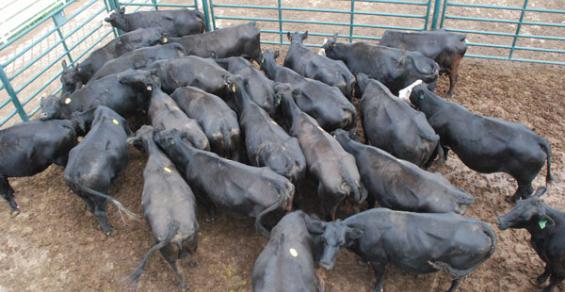“Already, major industry players such as Walmart and McDonald’s have committed to developing holistic sustainability programs that include food traceability as a key component. The ‘farm-to-fork’ mentality is not a phenomenon; it is increasingly being defined as an objective, with actual components already implemented by stakeholders along the value chain.”
That’s one of the conclusions of a recently completed study, U.S. Beef Cattle Identification and Traceability Systems: Opportunities, Obstacles and Incentives Across the Value Chain. The National Cattlemen’s Beef Association (NCBA) commissioned the study as part of its Beef Industry Long Range Plan (LRP). World Perspectives Inc. (WPI) conducted the study.
For the record, according to the specific LRP strategic objective: “Secure the broad adoption of individual animal ID traceability system(s) across the beef community to equip the industry to effectively manage a disease outbreak, while enhancing both domestic and global trust in U.S. beef and ensuring greater access to export markets. Critical and immediate: Conduct a feasibility study to understand the economic opportunity of opening new and expanding markets … and the lost opportunity in the event of an animal disease outbreak.”
Other than the nation’s problematic animal disease traceability (ADT) program begun in 2010, the industry has figured out how to kick the traceability can down the road forever. Even the consequences of BSE in 2003 failed to galvanize enough industry will to figure out a workable system.
Yep, there’s plenty of reasons for that, including legitimate concerns about data privacy and security, the cost and who bears it, and the necessity of keeping up with the speed of commerce. Never mind the chat about mandatory versus voluntary.
None of those concerns diminish the ongoing collective needs for such a system. Those include mitigation of an animal disease catastrophe, market access and consumer confidence, not to mention the ability to verify.
In the meantime, in order to fulfill the requirements of value-added programs, process verification programs and the like, an unknowable percentage of the nation’s fed cattle are identified and traced back to the source of origin. Arguably, most of that participation is driven by the feedlot and packing sectors.
In terms of cow-calf producers, 8.1% in the aforementioned NCBA study indicated they currently participate in a mandatory ID traceability system other than ADT. Another 21.7% said they participate in a voluntary program.
All the while, demand for verification is growing for many things. Some are older than Moses’ baby teeth, like verification of a bull’s pedigree. Some, like verified preconditioning, are more recent. Some are in progress.
“The transition to online shopping and meal kits will likely mean tighter controls on production specifications,” says Don Close, RaboResearch Food & Agribusiness senior protein analyst. “Those specifications will include verification of production practices, as well as tighter controls as to how cattle are fed and managed, carcass weights, marbling requirements and portion requirements.”
That hits squarely the farm-to-fork mentality mentioned at the outset. You can find more insights from Close regarding the online shopping revolution and its impact on beef in this issue.
Of course, verifying any attribute associated with a particular product is impossible unless the thing being verified can be identified.
“The industry should be proactive in continuing the discussion of animal identification,” says the NCBA report. “An industry-driven approach allows the cattle and beef value chain to develop a structure that best suits the entire industry, with the opportunity to minimize unnecessary costs and maximize shared benefits. It also facilitates the adoption of a realistic time frame for system(s) rollout, and assures that implementation can be done proactively, rather than reactively.”
Amen.




Leave A Comment